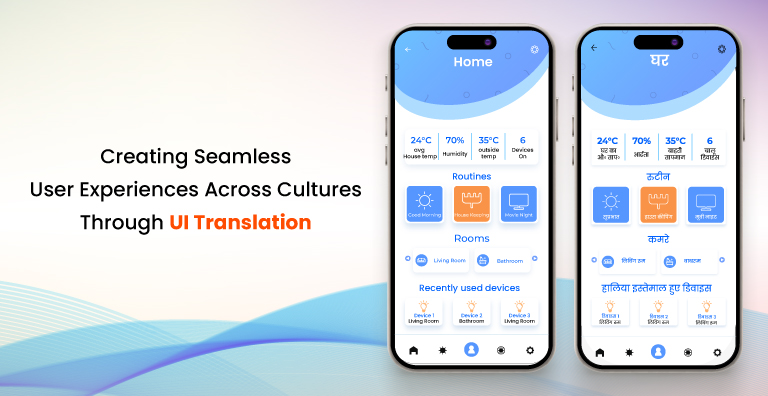As human and computer interactions become more common, companies have started making more efforts toward building an interactive user interface (UI). However, on the other hand, companies have another significant aspect to deal with – personalization. Here, UI translation and localization step into the scene. Appropriate user interface localization and translation are crucial in delivering incredible user experiences across various cultures and strengthening user trust. So, let’s delve into some aspects of UI translation and its role in delivering a blissful and memorable user experience.
What is a User Interface?
It might sound fundamental to some readers. But for those new to the concept of UI, let’s quickly overview it. So, UI works as a bridge connecting humans and computers with each other. As a user, an element with which you interact becomes a UI. The three types of UI design include Graphical User Interface (GUI), Menu-driven interface, and Voice user interface (VUI). Additional ones include touchscreen UI and form-based UI.
UI has four key components – navigation, information, input controls, and containers. Navigational elements include search fields, back arrows, and slide bars. The informational component helps communicate information to the user. On the other hand, input controls are on-page elements enabling users to input information. Lastly, containers are components that help organize content into easily consumable sections.
Now, is there a difference between UI and UX? Yes. There is. UI and UX are terms often used interchangeably. But both are unique. UI focuses on interaction design and an application’s visual facets. However, UX design aims to satisfy the user’s intent.
The Significance of UI Translation – Exploring Multilingual UI
Let’s consider the example of a company releasing a mobile application in a particular market. For instance, if the company wants to release the application in a Spanish-speaking region. The company will have to translate and market the translated UI of the application in Spanish to captivate user attention. Users should know that the mobile app they’ve been looking for to interact with has their language option.
Essentially, UI translation or a multilingual UI contributes to enhanced user experience. Investing in UI localization and translation can help the company establish a cultural connection with the prospective users in the region. Although, every language has its unique identity. It is also part of a particular culture. Hence, language first and then culture helps pave the way for memorable user experiences.
The fact that a brand values a specific culture can delight users. They are more likely to resonate with such businesses and support them through downloads, interactions, and transactions. Thus, in a nutshell, user interface localization and translation lead to potentially better and more fruitful cultural interactions and engagements.
But is UI translation only about cultural connections? No. Multilingual UI can help companies earn a competitive advantage. For instance, an eLearning company venturing into Malaysia and providing content in the regional language with localized text, content, and videos will have an upper hand over its competitor who doesn’t. It will easily capture the market and may set a benchmark with its multilingual UI if it is the first one to do it – early entrants always enjoy the time advantage and can acquire a larger market share.
Having a multilingual UI or UI localization or translation isn’t imperative. But those who don’t may struggle gaining user confidence and continue floundering in the market! Of course, you don’t want to be one among them. So, connect with LinguaSol. One of the leading providers of UI translation services and UI localization services.
Our expertise in hundreds of Indian and foreign languages and in providing UI localization and UI translation services for multiple domains make us a prudent choice. Please write to us at [email protected] to explore more about our multilingual UI localization services and proposition.
Ref. No- LSB11231036


